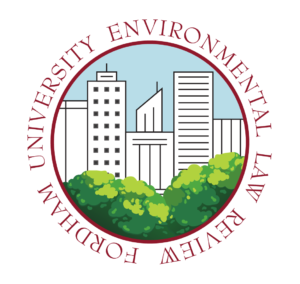Toxic Spaces: How Environmental Justice and Criminal Justice Intersect
Authored by: Patrick K. Lin(he/him/his);
Brooklyn Law Review, Executive Notes Editor
Asian-Pacific American Law Student Association, President
Author of Machine See, Machine Do (December 2021)
In the Upper Midwest, the sky looks like it is set ablaze. Vibrant red, pink, and orange sunsets are often the result of forest fires in the region because the lingering smoke particles filter out other colors as they drift through the sky.
The 48217 is a zip code in Detroit. It is the most polluted zip code in Michigan. There, the sky is also an intense, fiery red. However, this spectacle is not the result of forest fires. Instead, the sky is saturated with aerosol particles and other pollutants from oil refineries and local industry. It turns out local pollution over cities can also alter the color of the sky. 71 percent of the population living in the 48217 is Black.
Historically, people who already experience social, political, and economic marginalization are also more likely to experience disproportionate environmental and health threats from public and private institutions than other populations. For example, corporations and industries often locate hazardous waste sites and other polluting facilities in minority and low-income communities because these communities tend to have fewer resources and less political power to oppose the construction of such facilities. This problem is further compounded by racial discrimination in zoning policies, lending practices, and housing.
A report issued by the National Association for the Advancement of Colored People and the Clean Air Task Force said more than a million Black Americans live within half a mile of an oil and gas facility. According to the report, Black people are not only 75 percent more like than other Americans to live near oil and natural gas refineries. They are also exposed to 38 percent more polluted air than white Americans. Race continues to be one of the most accurate predictors of whether someone lives near pollution.
The Environmental Justice Movement that emerged in the early 1980s recognized and emphasized that environmental problems cannot be solved without also addressing practices that uphold social injustices. If environmental injustice is a process and outcome of institutional violence against communities of color (in the form of polluted air, land, water, and human bodies), then what does it tell us about the way we treat those communities as inherently criminal and deserving of punishment?
The U.S. prison system is an institution where people of color, particularly Black people, are overrepresented. However, jails and prisons are also built adjacent to or even on top of toxic waste sites, overwhelmed with air and water contamination, and produce hazardous waste. If environmental injustices are the result of our country’s history of systemic racism, then incarceration and environmental harm are inextricably linked as well.
Understanding environmental injustice through a criminal justice lens provides greater depth and nuance. For instance, Black communities have much higher rates of childhood asthma as a result of polluted air. Similarly, because toxic industries are built near or in lower-income communities, workers are also more exposed to hazardous materials. Police occupy these same communities, patrolling neighborhood streets and school hallways alike. This over-policing also leads to incarceration in prisons built on noxiously polluted ground, where individuals are routinely surveilled and punished.
These are not intrinsic or genetic or coincidental outcomes. Communities of color are dying at higher rates from environmental harms, police brutality, and COVID-19 because of systemic and institutional problems.
Public institutions like law enforcement are not the only ones to blame. Private institutions, such as the fossil fuel industry and major financial institutions, also play a significant role in exacerbating our climate crisis while also helping to bankroll and support police departments across the country.
Big Oil, for example, not only chooses to pollute in Black and Latinx communities but also sponsors police departments and lobbies for laws that criminalize protests at fossil fuel sites. A 2020 investigation exposed the amount of oil and gas money flowing into police force pockets in major U.S. cities. For example, Shell and Chevron are “featured partners” of the New Orleans Police & Justice Foundation. Chevron is also on the board of Houston’s police foundation.
Furthermore, banks finance oil, gas, and coal operations while serving as corporate sponsors to police departments. JPMorgan Chase, the top global financier of fossil fuels, is a “Corporate Partner of Police” of the New Orleans police foundation and has garnered scrutiny for racial disparities in its mortgage lending practices in Chicago. Wells Fargo is a sponsor or donor to the Charlotte-Mecklenburg Police Foundation, the Seattle Police Foundation, and the Atlanta Police Foundation. Wells Fargo has also been involved in discriminatory lending practices and propping up private prisons.
Ultimately, environmental justice and criminal justice advocacy both take place against a complex backdrop of racial segregation, disparities in access to political power, and economic inequality. Many of the same battles are being fought on both fronts. At its core, environmental justice and climate activism arise from the recognition that actions have consequences; consequences come with responsibilities; and we are responsible for the fate of our planet and its inhabitants. Environmental injustice and criminal injustice intersect and amplify one another both behind bars and in communities all across the country.

